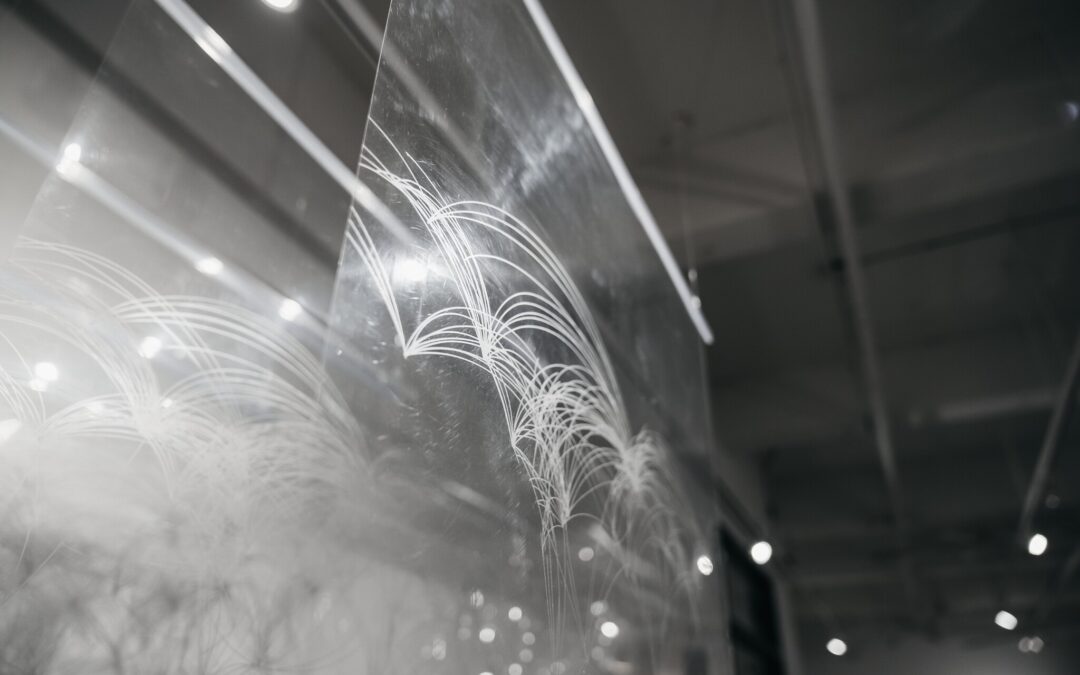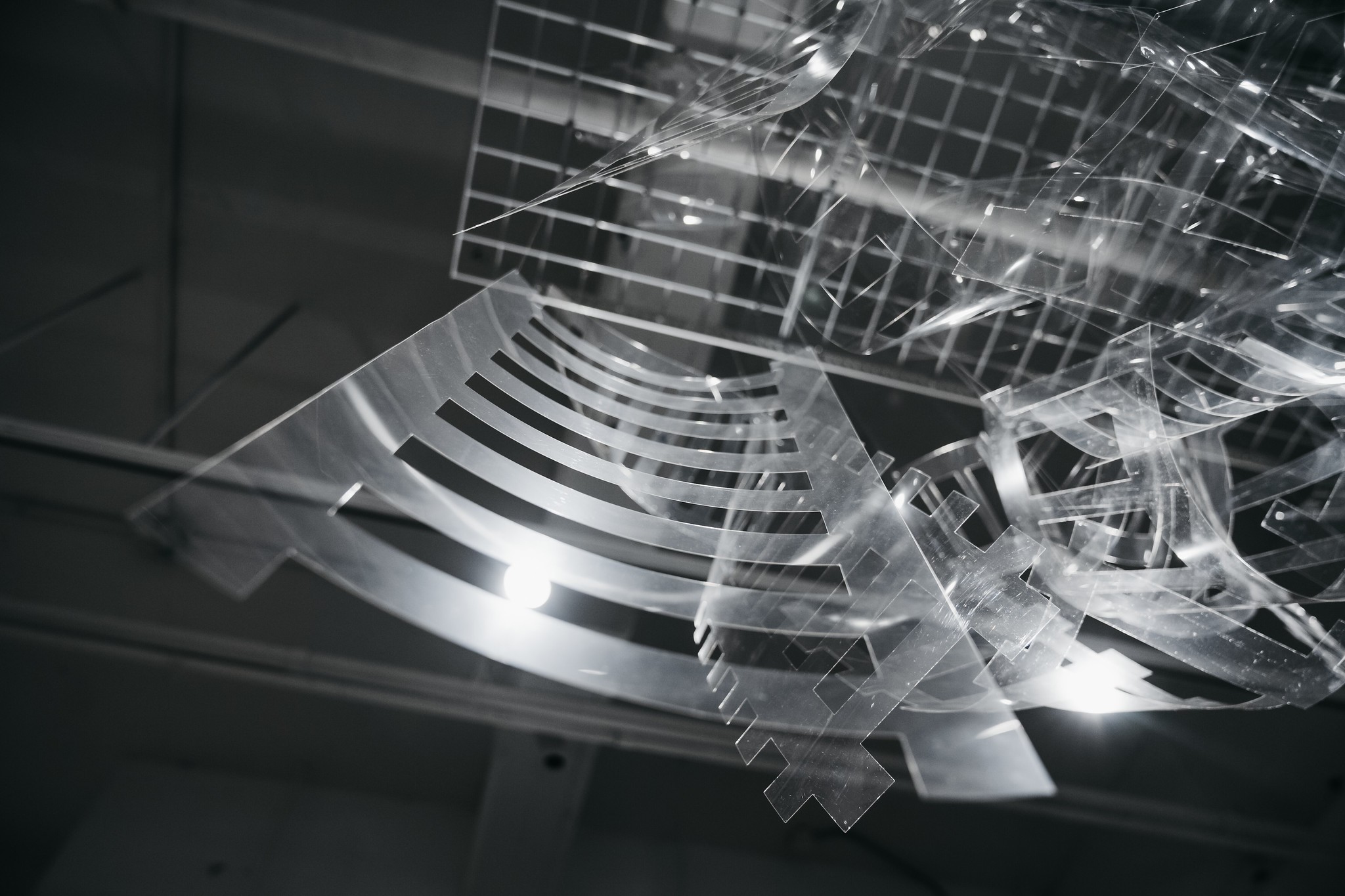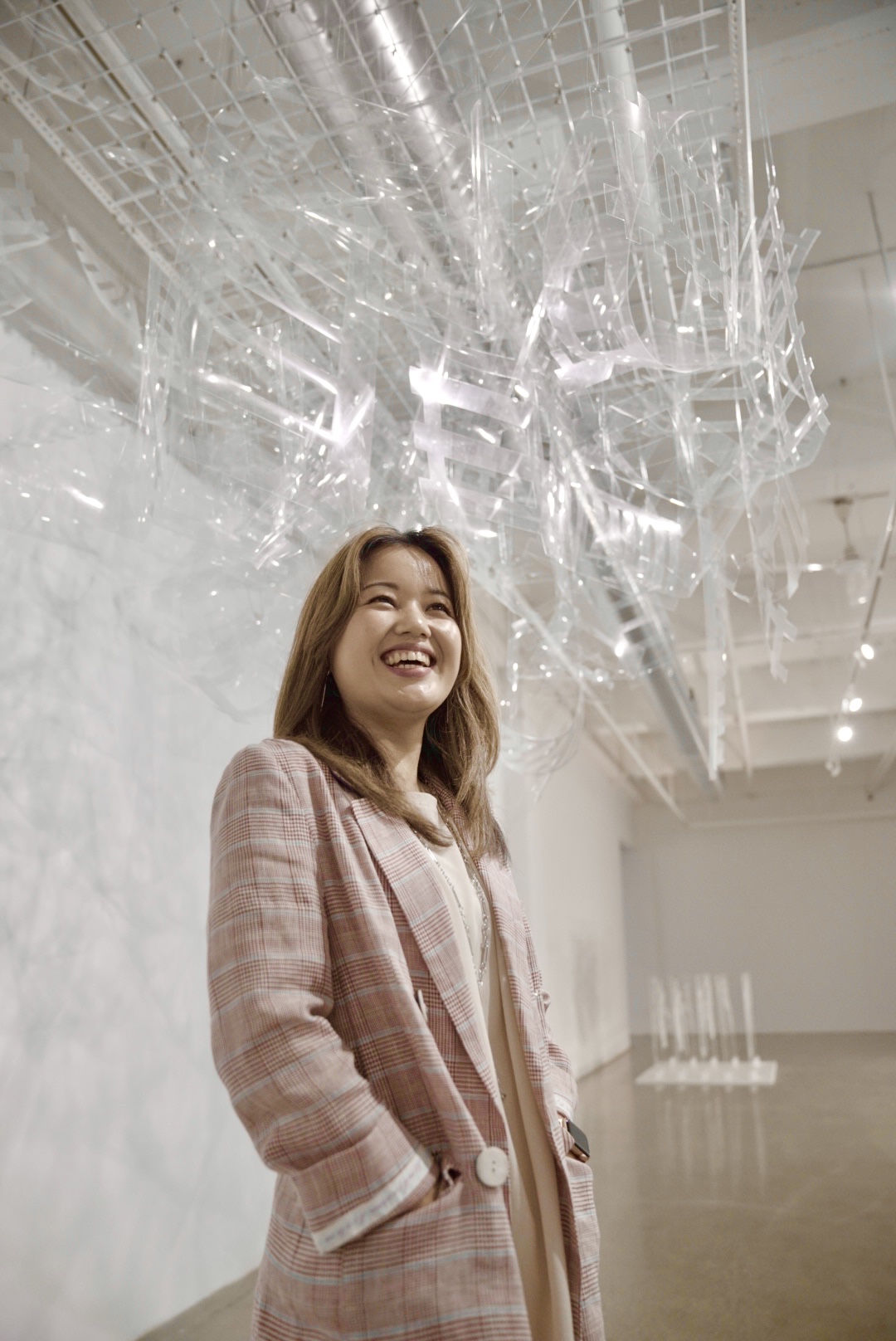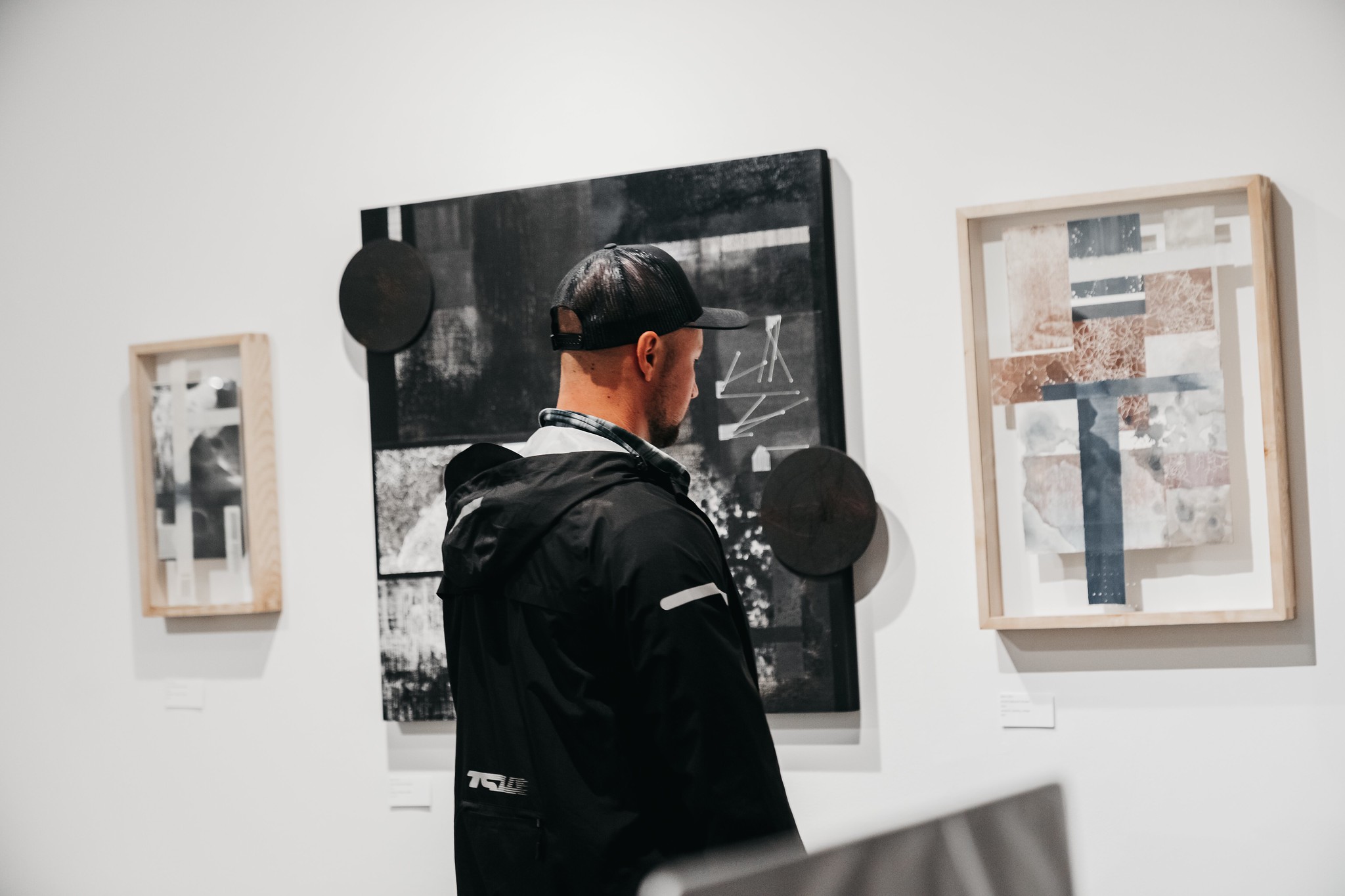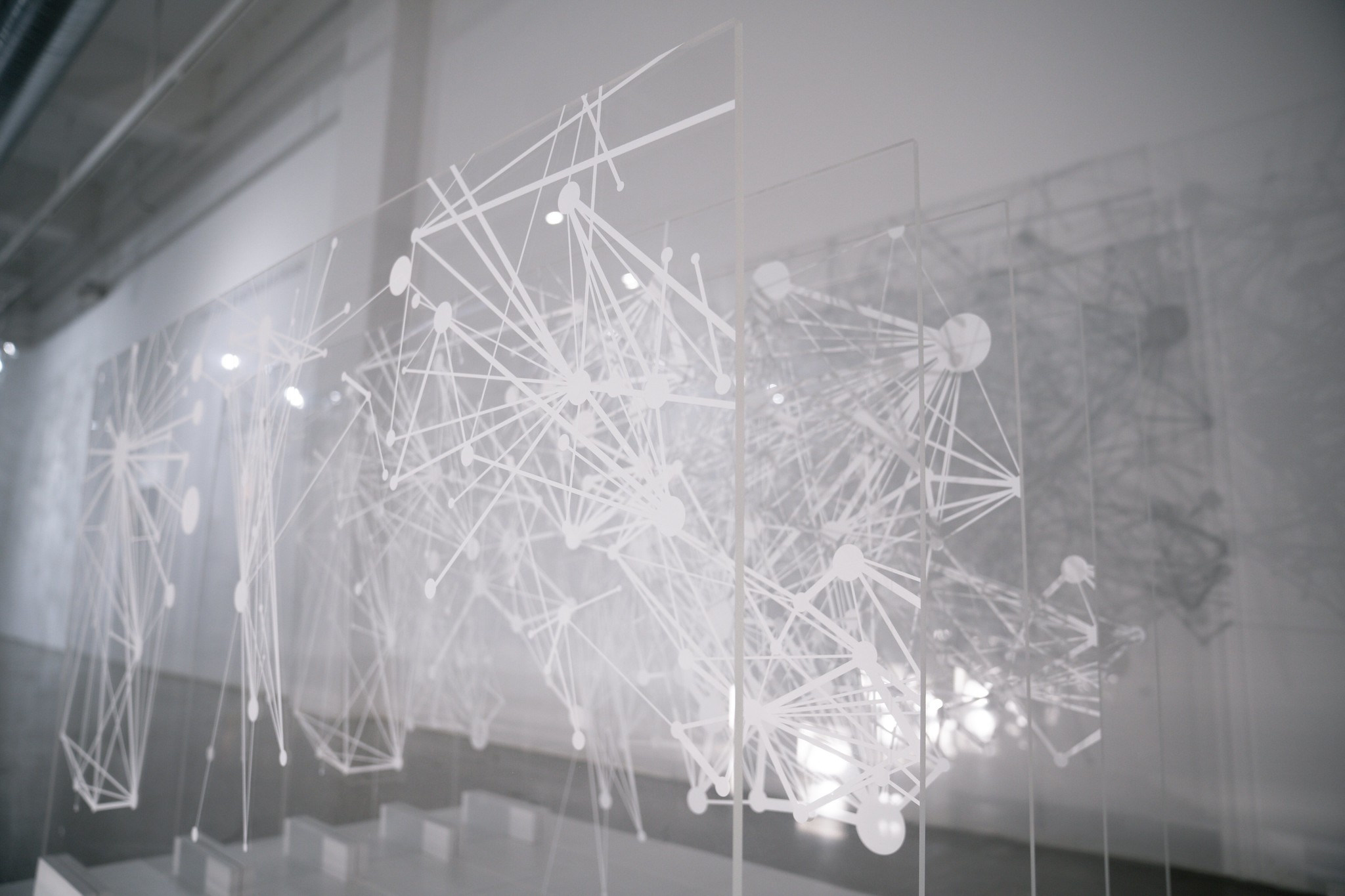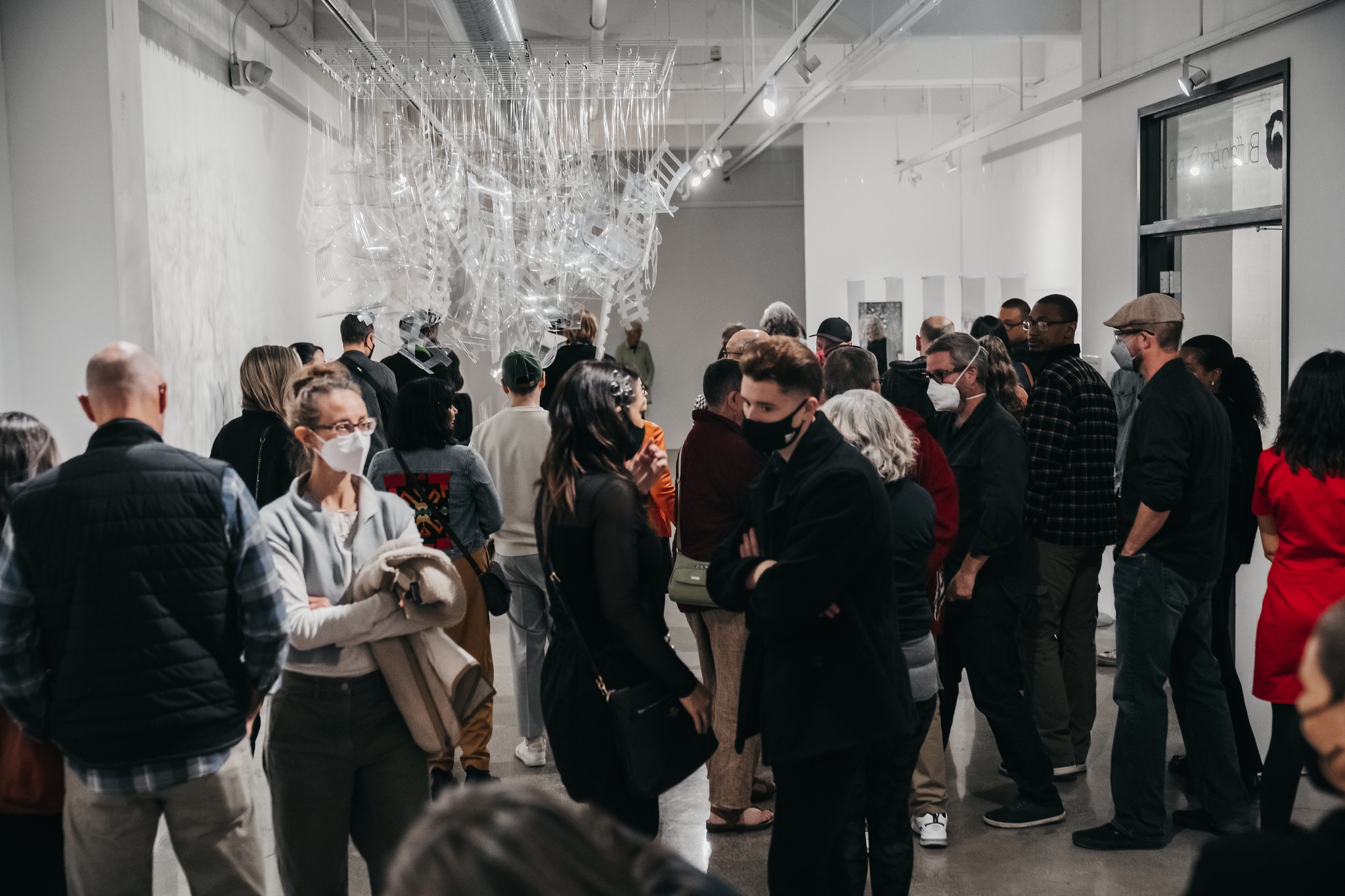Date/Time
Date(s) - 09/23/2022 - 11/04/2022
12:00 am
Location
Buffalo Arts Studio
Categories
Opening Reception, Friday, September 23, 2022, 5:00—8:00 pm
Part of M&T Bank 4th Friday @ Tri-Main Center
Futuristic Connections, Curatorial essay by Shirley Verrico
Mizin Shin’s new project, World Network Models, visualizes transportation data to expose the interdependent travel systems that function as networks of migratory movement. Developed since the onset of COVID-19, Shin’s prints, drawings, and installations map data from historical trends in international mass ground and air transportation, including various travel technologies. The work not only portrays the stages of technological evolution but also illustrates the continual expansion of interconnectivity and complexity within travel patterns. The visualizations reveal anthropological networks developed through war, trade, and commerce.
Shin’s process is rooted in data collection. The data comes largely from public domain sources that include municipal, national, and international transportation statistics. Shin also researches historical texts and archives, reorganizing and digitizing the information to fit her needs. Shin then enlists a team of friends who work in quantitative research fields, providing data analysis and visualization. The researchers guide Shin as she cleans and organizes the data into formatted spreadsheets. Her team also assists in translating the technical terminology and shares their expertise throughout the visualization process. Although there are a number of software packages that allow the user to adjust specific parameters, Shin acknowledges that much of the visualization process is trial and error.
Once the computer visualization is complete, Shin reinterprets the data yet again. She redraws the forms as vector data, hand-tracing each of the nodes and the connections. The final network models are qualitative interpretations combined with collages of quantitative information. The transparency of the polyester film and acrylic sheets of the World Network Models allow viewers to see the multiple networks simultaneously. It also allows for a site-specific version of the visualization to exist in the shadows that appear behind and through the final artwork. This expansion and repetition of the images deepen the metaphor embedded in Shin’s work.
Locating and articulating connection is central to all of Shin’s artwork. Earlier series revealed the interdependency of manufacturing and production systems as well as the interrelationships of economic and social systems. “By showing intrinsic connections among simple objects, [this] work can shine light on the idea that all elements of our systems are of significance, from the individual to the larger construct,” Shin said.
In addition to the data maps, the hanging work in the gallery entrance references actual travel technology rather than travel data. The shapes from the hanging installation are based on historical tracks for different kinds of trains. Both track design and material has changed over time due to technological improvements as well as the increasing speed of the trains. Shin has flattened and simplified the rail structures, varying the shape and scale. Although these rails have been available at different times and installed in different geographic locations, all connect and intertwine through historical migration, exploratory travel, and cultural trade routes.
Like the other transparent installations, the shadow is a visual example of how we can see this experience through both micro and macro perspectives and across multiple dimensions. As one moves in and around the installations, the movement activates the hanging film and the viewer’s shadows float into the forms on the wall. Shin has left space for the viewer to join the network, connecting both the micro and the macro, the personal and the universal.
This exhibition is part of the Displacement: Reclaiming Place, Space, and Memory Exhibition and Workshop Series, which is funded in part by the National Endowment for the Arts.
Projects for this exhibition were completed with funding from the AHL – Andrew & Barbara Choi Family Foundation Project Grant.
Artist Biography
Born and raised in South Korea, Mizin Shin is a US-based visual artist. Mizin Shin graduated from Hong-ik University with a B.F.A in Printmaking and received her M.F.A from SUNY at Buffalo. Shin’s work has been shown nationally and internationally at institutions across the United States, Belgium, Spain, the UK, India, and South Korea in exhibitions including Multiple Ones: Contemporary Perspectives in Printmedia, International Print Center New York: New Prints, Wheaton Biennial: Printmaking Reimagined, and Screenprint Biennial. She is a 2022 fellow of the Civitella Ranieri artist residency in Italy. Shin is currently Assistant Professor in the Department of Art & Art History at University of Rochester. She is also a co-founder of Mirabo Press in Buffalo, NY, and a board member of Mid America Print Council.
PDF of the exhibition catalogue is available for download here.
Photos by Creatives Rebuild New York Fellow, Aitina Fareed-Cooke.

